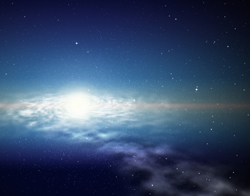Detecting weak signals in cosmic background noise
The Universe is made up of matter – and anti-matter – and dark matter and all kinds of exotic things that make the picture a bit more complicated than most remember from basic high school physics and chemistry. Europe is a leading player in the multidisciplinary field of astroparticle physics connecting interrelated fields of particle physics, astronomy and cosmology. It maintains four Deep Underground Laboratories and two Gravitational Wave Observatories. Deep Underground Laboratories are located from one to two kilometres under the Earth’s surface. They are designed to minimise interference from cosmic ‘noise’ and enhance detection of cosmic particles such as those (of unknown type) that make up the dark matter that accounts for the majority of the Universe. Gravitational Wave Observatories are designed to detect the existence of so-called gravitational waves (GWs). GWs are ripples in space-time produced by massive accelerating bodies such as black holes. Though predicted by Einstein’s Theory of General Relativity, they have yet to be detected experimentally. In order to strengthen Europe’s position in astroparticle physics, EU researchers initiated the ‘Integrated large infrastructures for astroparticle science’ (ILIAS) project. Overarching goals were to improve networking, research and international access to facilities. Among project achievements were extensive categorisation at both types of installations of sources of background noise and materials and methods to minimise them. Knowledge should enhance the quality of future experiments as well as aid in selecting new sites and materials for observatories. The ILIAS consortium also made major progress in modelling of GWs yielding the first reliable waveforms for merging black holes and for upper limits on gravitational deformations of isolated neutron stars. Such data should enhance development of signal detection algorithms and thus the likelihood of first-ever detection of GWs. ILIAS has strengthened the EU research community in astroparticle physics with significant enhancements to infrastructure, joint research activities and international networking. Reduction of noise and enhanced signal detection combined with broad scientific access could make the EU’s facilities the first to unravel the nature of dark matter and detect the long-sought but elusive GWs.

